-
Car Reviews
- Car News
-
Car Comparisons
Latest comparisons
- Chasing Deals
Lower on specs, bigger on price – can the long-awaited plug-in hybrid version of Ford’s big-selling 4×4 ute compete with Chinese rivals?
First and foremost, the 2025 Ford Ranger PHEV has been designed and engineered in Australia, which is confidence-building for what is essentially a new product. It really does say a lot. But it would be kind of nuts to think PHEV ute rivals in BYD Shark 6 and GWM Cannon Alpha haven’t received loads of local development too.
This level of refinement though is main reason Ford are keen to get us behind the wheel and experience the Ranger PHEV. Not just judge it based on specs.
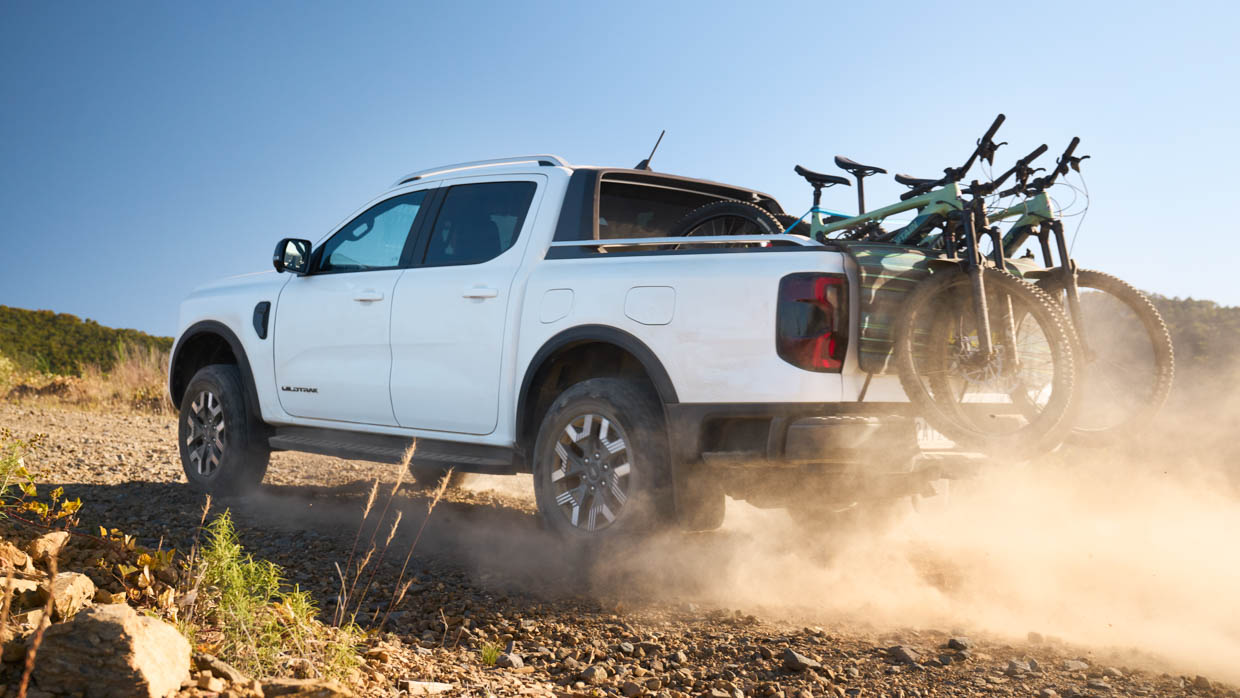
Speaking of specs, we’ve already put together a specs battle comparing the Ranger, BYD Shark 6 and GWM Cannon Alpha PHEVs on paper to see how they stack up.
When we do just look at the scoreboard, however, it is clear to see on paper the Ranger PHEV comes third place in a race of three. Especially being the most expensive vehicle in class, weighing against it during these challenging economic conditions.
Can the proven ride quality and handling package of the locally calibrated Ranger be enough to beat the Chinese competition away with a dual-cab shaped stick? That’s what we flew to Melbourne to drive the much anticipated plug-in Ranger for a few days to find out.
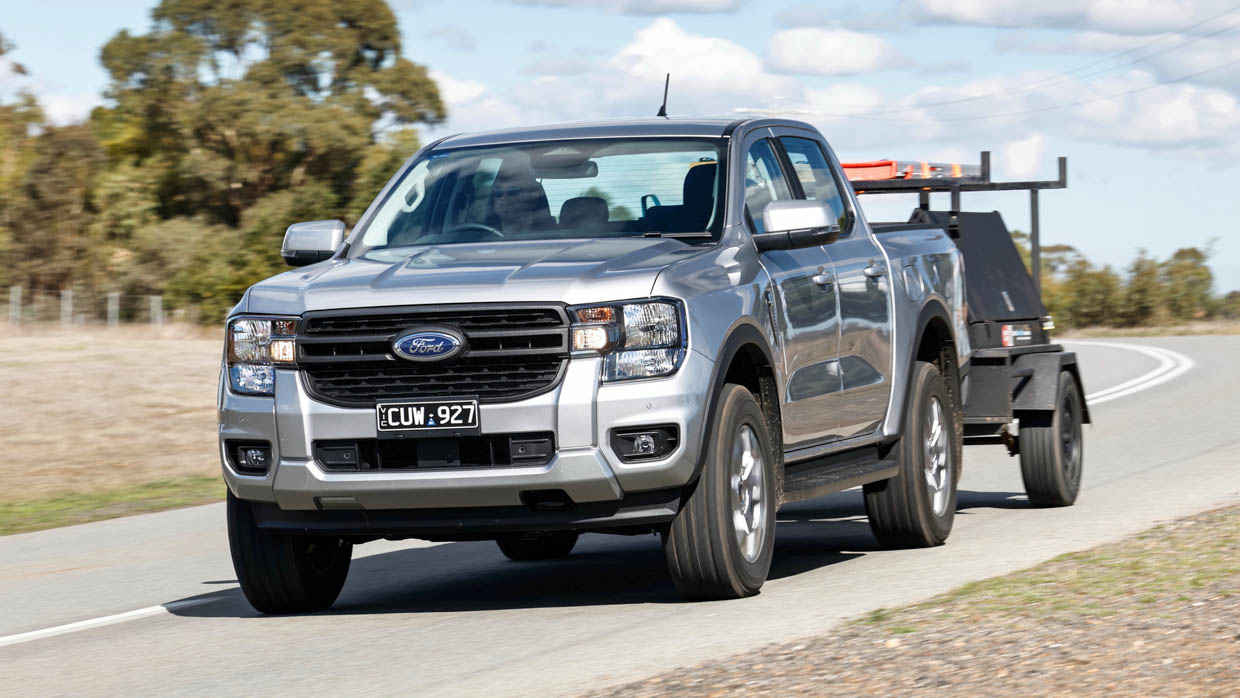
Ford says it’s delivered a petrol-electric ute with more power and more torque while offering better fuel economy than any diesel Ranger alternative.
Towing, payload and off-road ability are, Ford says, key to the Ranger PHEV…which is a similar song that GWM was singing at the launch of its Cannon Alpha PHEV competitor.
So, what’s the why for this model? To set the scene, we thought it would be prudent to provide some ownership stats. Ford has collected data from over 10,000 Ranger owners’ use patterns, which starts with the official suggestion that 59 percent of owners use 4A mode (four-wheel-drive Auto.)
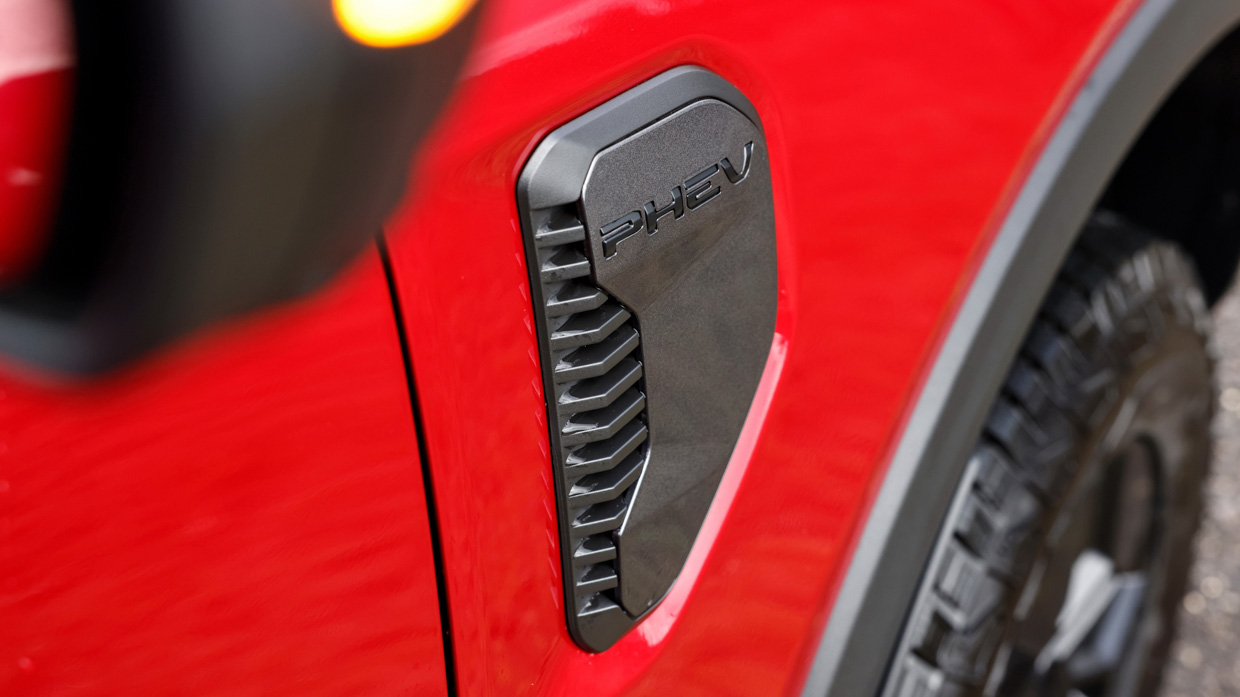
A further 45 percent of owners have engaged 4×4 high-range, while 11 percent used low-range 4×4, which is much lower figure than we expected.
What this really shows what the majority of end users are doing with these vehicles; sticking to dirt roads or sand driving when out exploring. Something we found extremely interesting, too, is that 45 percent have used the factory rear-locking differential.
But the biggest number relates to towing, with 80 percent of Ranger owners hitching up something to tow during their ownership.
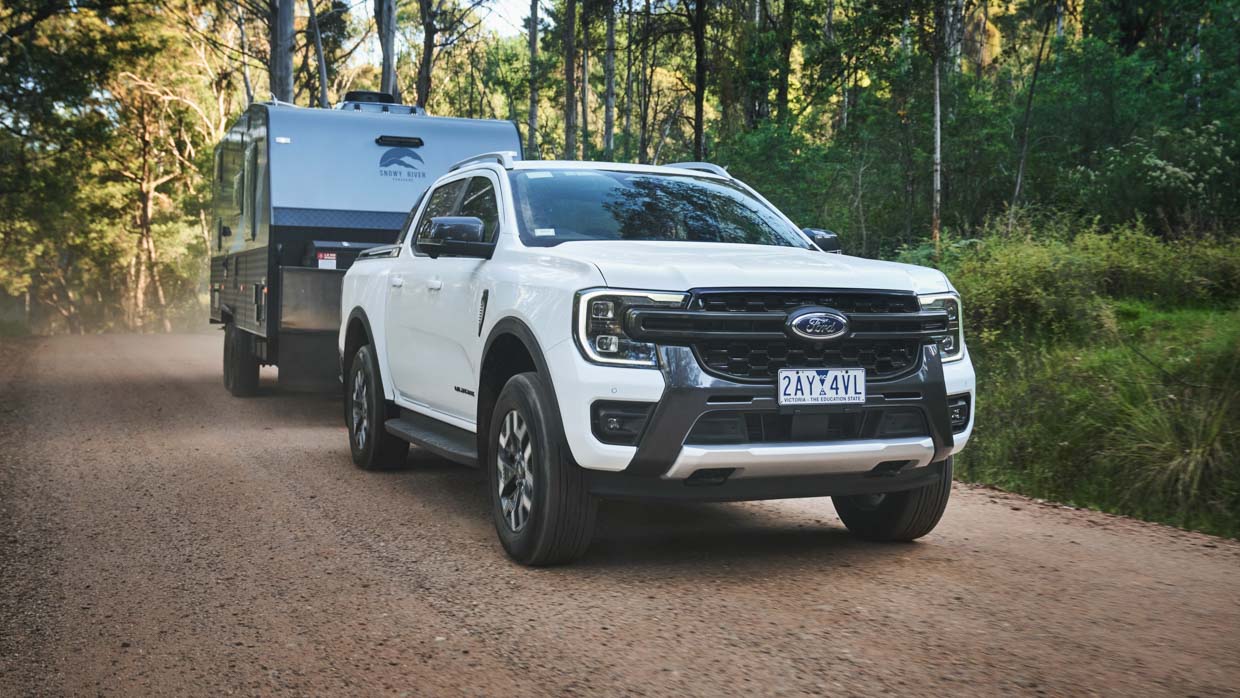
So simply using these stats, it’s easy to determine Ford’s design approach for this PHEV ute. It has to be able to tow at a class-matching number (3500kg), while offering decent GVM (3500kg) and GCM (6580kg). Payload is up to 973kg (in XLT trim).
It has to be able to go off-road, especially as half the owners tend to use the differential lock when venturing off into the elements. And it also has to be comfortable, something the diesel-powered Ranger does really well.
So why a PHEV? Because 518,2421 Rangers have been sold around the world, making it the second-best-selling mid-size 4×4 ute. It’s a vehicle sold in over 180 markets and on every continent except Antartica. Ford even declared a record year for 2024 selling 38,945 globally, which is 12 percent up on 2023 figures.
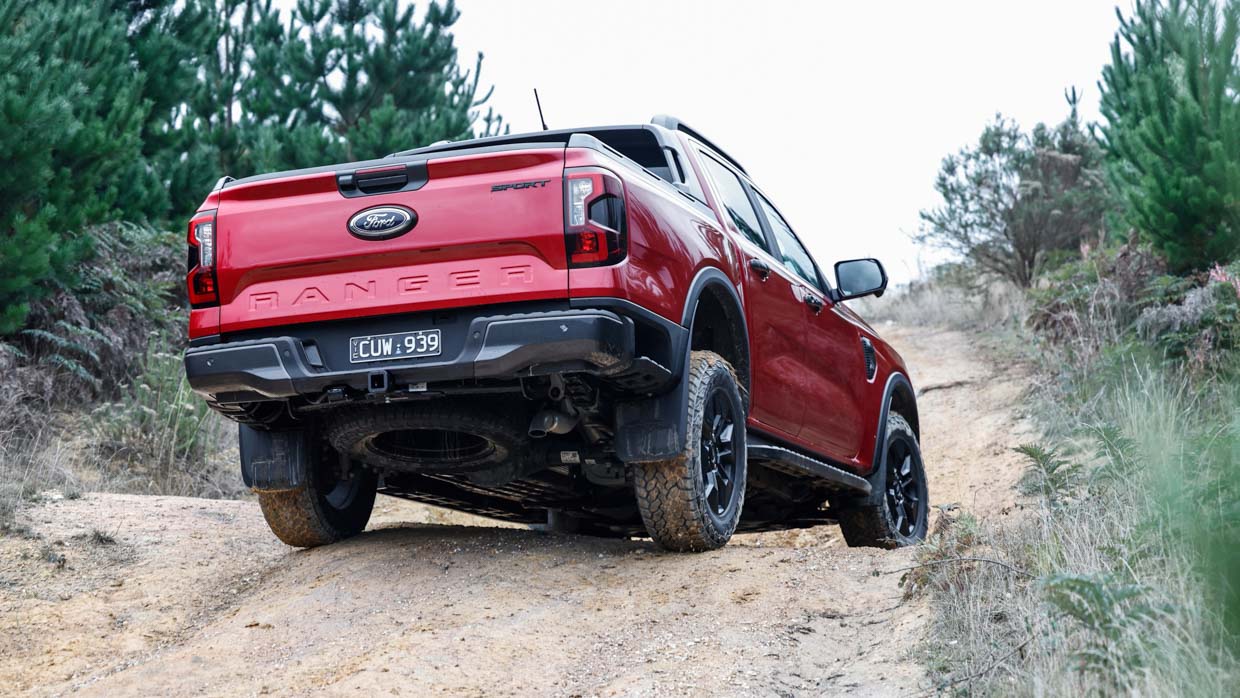
Ranger is also the number two selling ute in Australia, so this PHEV model makes sense as the numbers are there. But it also has a big job to do with reputation on the line in a vastly growing and competitive space.
Starting with off-road credentials, there is no front-differential lock in the Ranger PHEV, and the traction control system doesn’t have a Rock-Mode like the Raptor does.
Rival GWM Cannon Alpha takes the lead when it comes to off-road ability out of the packet with front and rear lockers and a more aggressive traction control system.
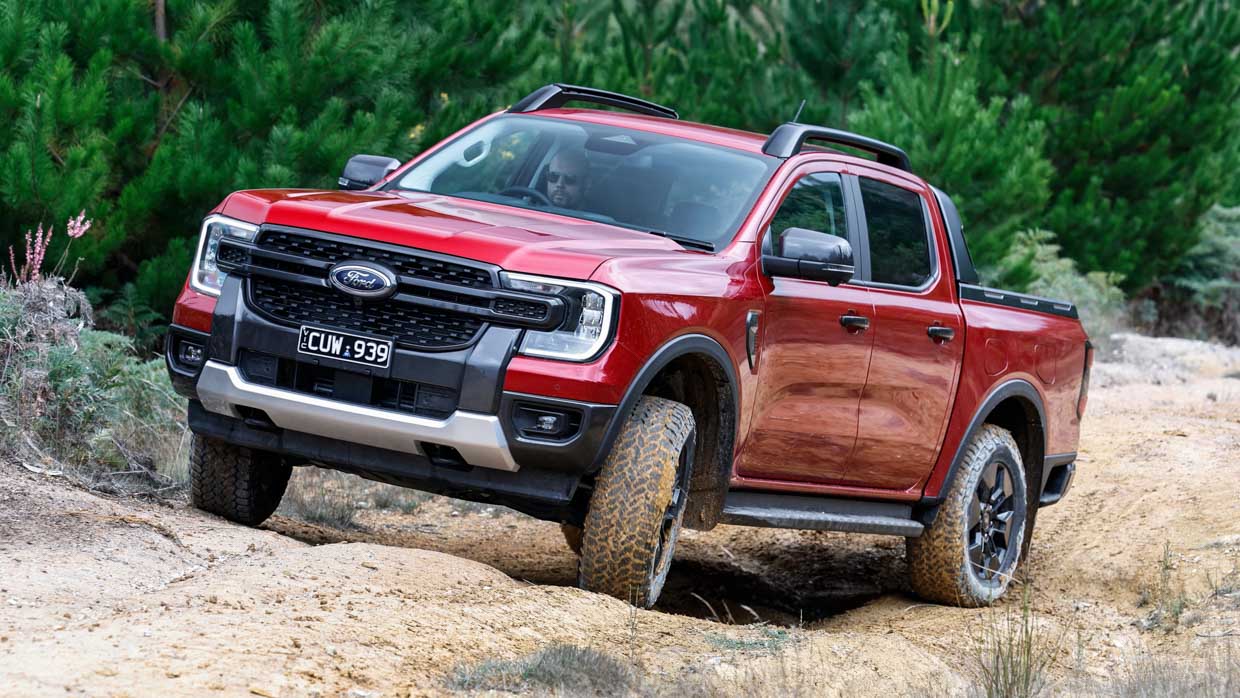
Traction control is not cut to the Rangers front axles when the locker is engaged, at least, which is a nice touch when it comes to off-road ability. Having additional traction at your disposal, while retaining the ability to steer easily is just what you want.
Unlike the coil-sprung Cannon Alpha, the Ranger PHEV has stuck with traditional leaf springs in the rear. But while the GWM doesn’t (yet) feel like a finished vehicle, Ford Ranger PHEV, at least in the Sport variant ($75,990 list) we tested, does feel much more complete.
I’d go so far as to say it feels even more refined than the ICE-powered Ranger line-up, which is the most refined mid-size 4×4 dual-cab on sale in Australia.
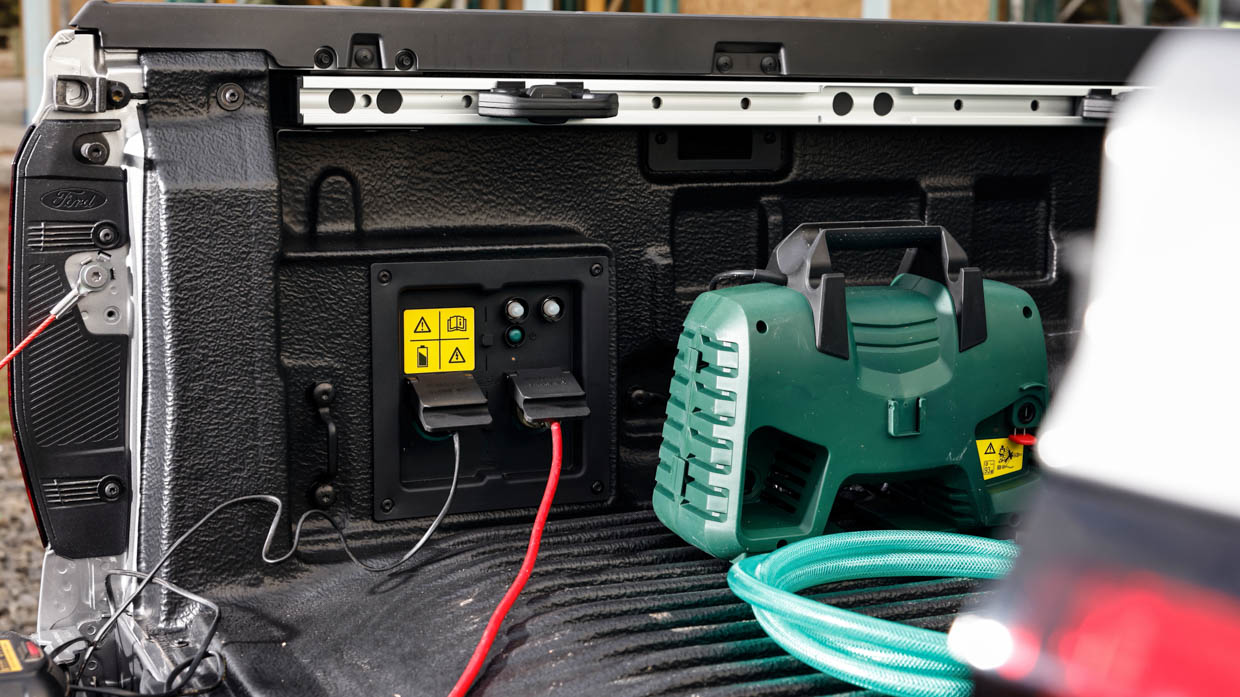
Power wise the PHEV Ranger boasts a claimed combined max output figure of 207kW with 697Nm, underpinned by its 138kW turbocharged 2.3-litre petrol EcoBoost engine: a first cousin to the engine used in the Ford Mustang (among others.)
Then there’s an additional 75kW electric motor paired to an 11.8kWh battery mounted underneath the tub area, directly to the chassis (an important point to note, which we will elaborate on later on). A 70-litre fuel tank is also standard fitment.
Kudos to Ford for managing to keep a spare wheel and tyre in the more traditional spot mounted under the tray, even with batteries occupying the vast majority of this space. It naturally reduces ground clearance, but it’s a neater solution than others. GWM (with its ute’s spare in the tub) please take note…
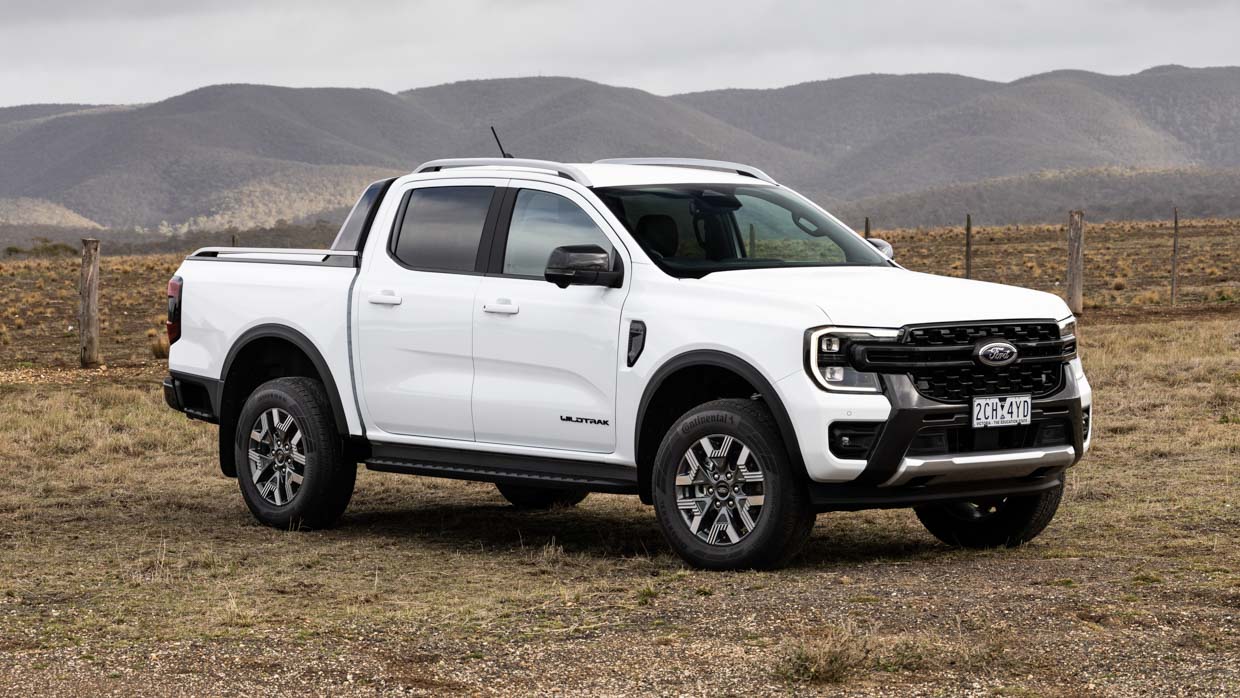
It’s a surprise to nobody, considering how many Ranger owners tow, that Ford has included their same towing technology featured in both the F-150 and diesel Ranger.
This suite includes Pro-Trailer Back Up assistance on top spec models (optional on Sport), Dedicated Tow/Haul mode, Integrated Trailer Brake Control, Trailer Sway Control, Trailer Blind Spot Monitoring, Trailer Light Check and the information Towing Checklist.
That’s quite a lot of technology that is genuinely helpful in the real world. I’ve said it before, and I’ll say it again, towing is serious business. This is the kind of tech that will help save lives.
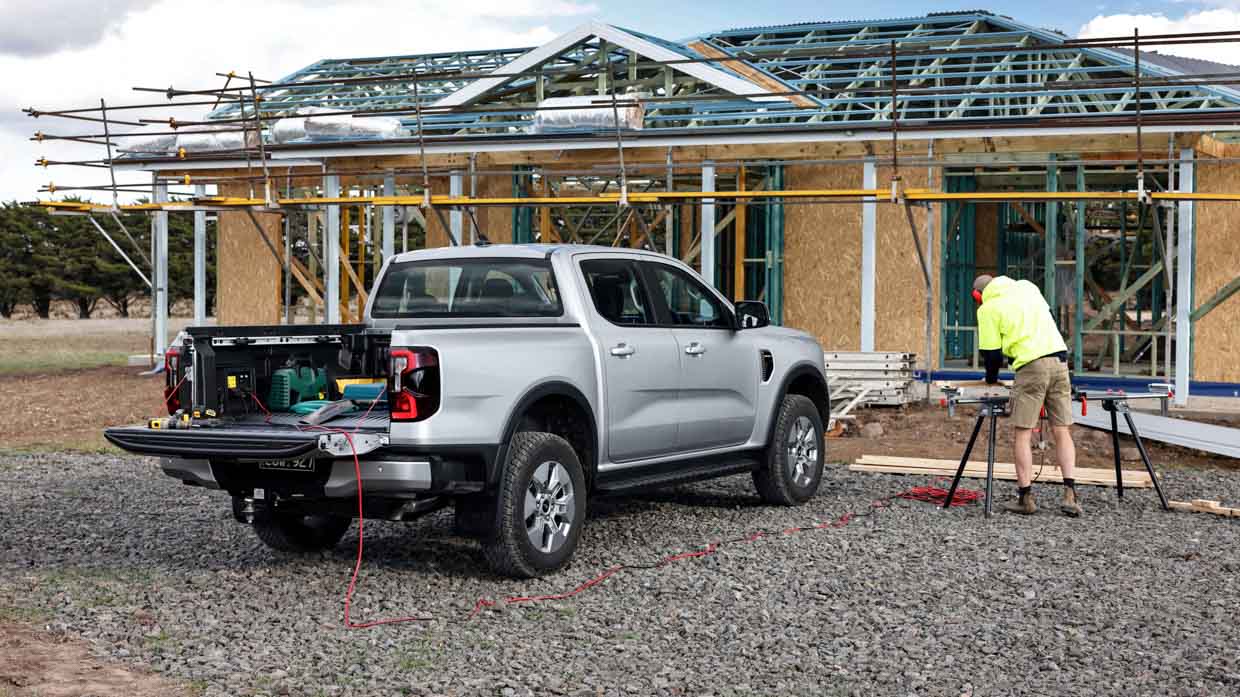
Where I can see room for improvement for the Ranger PHEV though, is the fact there’s no fast charge battery system. This vehicle is designed to be charged at home overnight on a 10amp socket, from a supplied 8.0amp charger. You can connect it to some public chargers, but you’ll be wasting your time really.
Mode wise, the selection includes ‘Auto EV’ that’s ideal for daily driving, ‘EV Now’ for all-electric drive, ‘EV Later’ which saves battery and electric drive for a later date, and ‘EV Charge’ where the battery is forced charged from the engine.
When driving in EV Charge Mode, it took about two hours to replenish the battery system, which Ford claims has an EV range of 49km – half that of key competitors. We did play around with this during the launch event, but will hold back on providing an tested figure here until we can get it into the Chasing Cars garage.
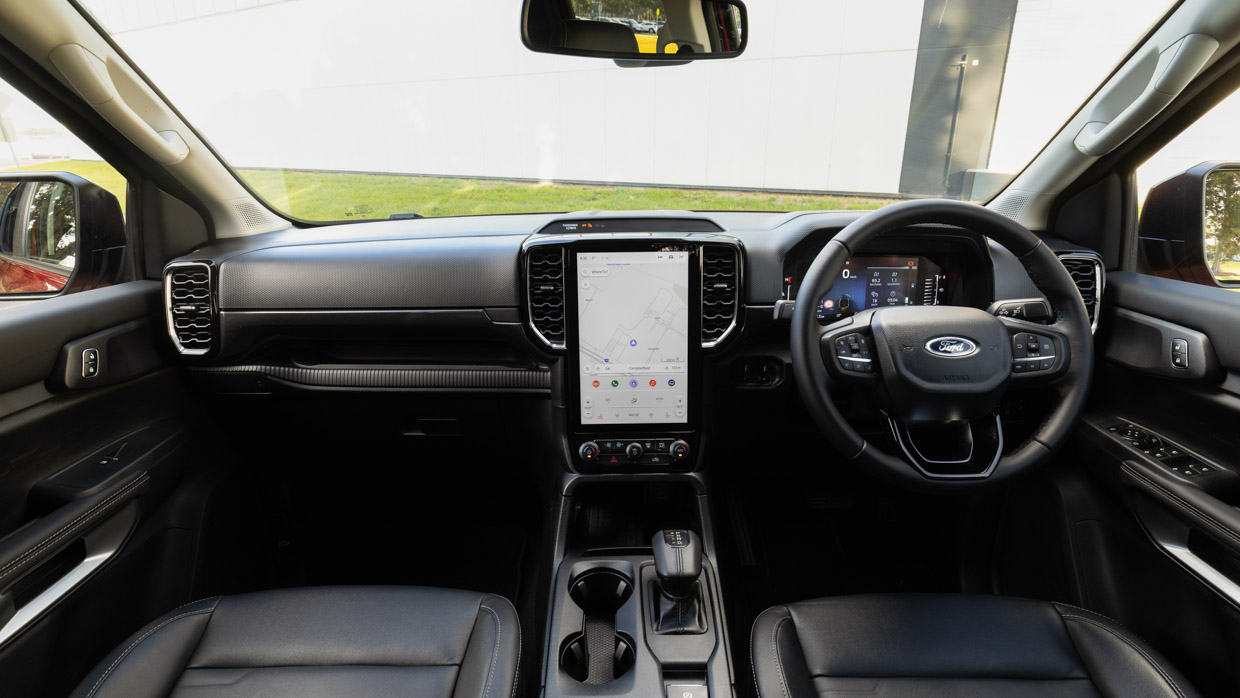
In the transmission department, there’s a new Hybrid Transmission (MHT) unit that integrates an E-Motor between the engine and transmission. With 10-speeds available, you have a gear ratio for all occasions, especially when combined with low-range reduction available in the transfer case, which seems to take a little while longer to engage than a diesel Ranger.
Now, this is a big one – if you remember a few paragraphs earlier, we mentioned the EV battery is directly chassis mounted, not tub mounted. For reasons surrounding vital factory wires, sensors and PHEV fuel venting system requirements, Ford is not recommending the installation of an aftermarket canopy service body or tray.
Rivals? GWM is happy for you to do so with the Cannon Alpha, but BYD says it will void your warranty if you attempt this modification. So only one-from-three manufacturers are on-board. This is a big concern that we hope will change in the future.
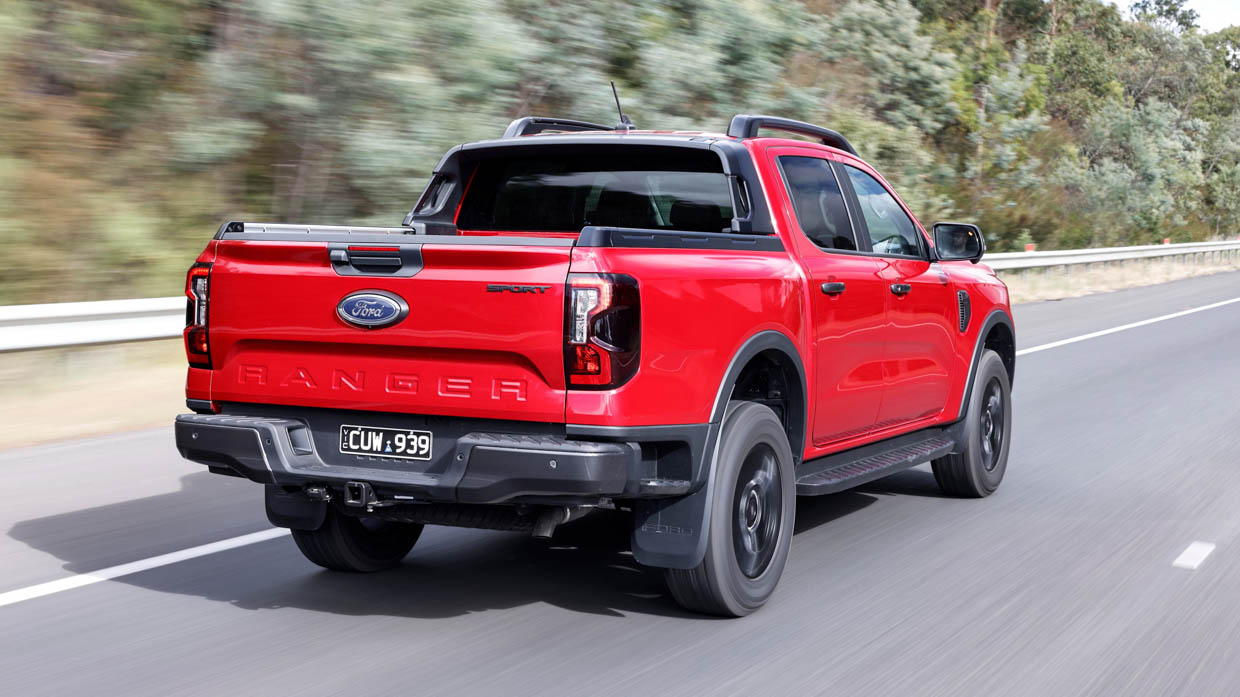
Now, Ford didn’t say it will void the warranty, rather that if a warranty issue occurred to any system that is related to the fitment of an aftermarket tray or canopy, things would get awkward for you at the warranty claim desk. For now, we wouldn’t attempt it.
This is an oversight in my opinion, as ute owners love to modify their vehicles hate being told they can’t. This fact alone will hurt Ranger PHEV sales until a Ford developed solution is made available. No tray or canopy package from Ford has been promised at this stage, fingers crossed they do offer a solution.
It has been confirmed that a full suite of off-road accessories will be factory offered, but these are in the process of being finalised and Ford wouldn’t dive into this further. I’d assume Ford’s partnership with Australian 4×4 accessory giant ARB would likely continue, however tweaks are still needed it seems.
Overall, I can’t really see what problem this vehicles solves. The Ranger PHEV is a hybrid of a hybrid. For my own needs it doesn’t offer enough EV range to get to work. The BYD Shark 6 just does, and the GWM Cannon Alpha will comfortably get me to the Chasing Cars office from my mountain perch.
For many a V6 diesel Ranger will make more sense. And the spare change of at least $3150 (depending on PHEV specs) goes some way towards a 12V battery system for camping and powering tools. Which is the main ace up the Ranger PHEV sleeve, a factory-provided rechargeable battery bank for camping requirements and powering tools.
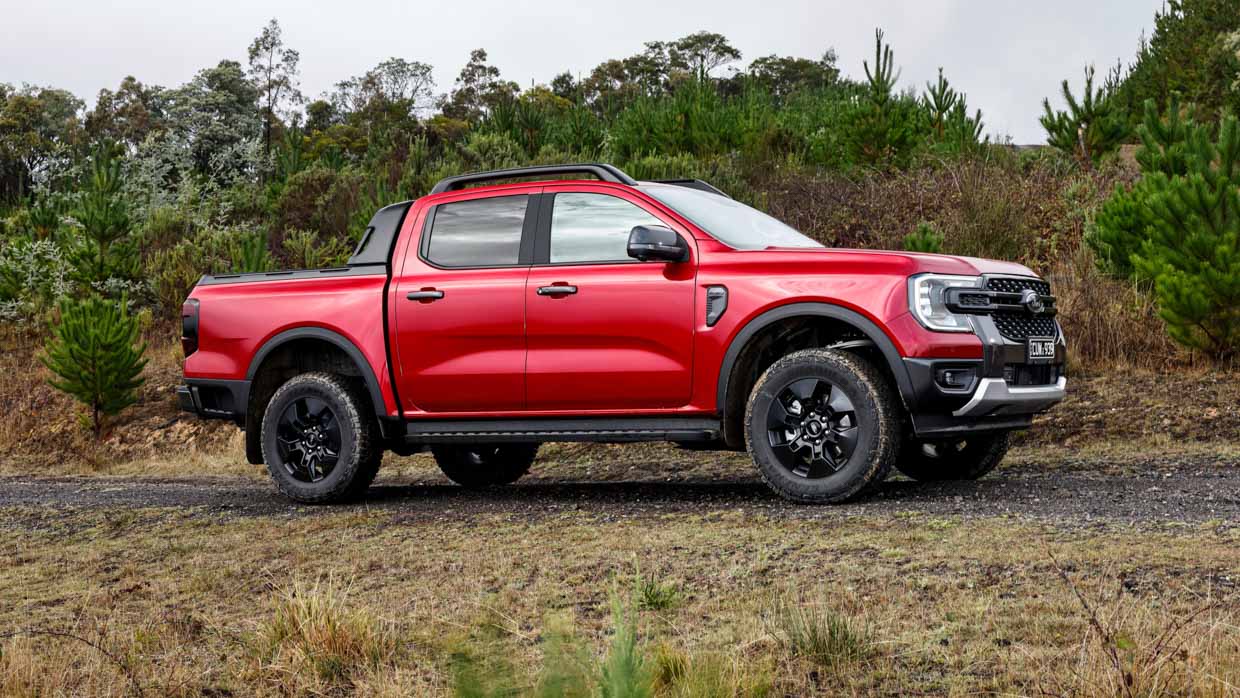
It must be said though, the PHEV Ranger does stay true to DNA, and it still feels and drives very much like a Ford Ranger, which for a long time has been the best road handling ute on the market. So this PHEV Ranger it’s true to form.
But, geez, the competition is nipping at Ford’s heels, with better specs and lower pricing after comparing apples with apples. With this emerging wave of PHEV petrol-electric utes, we’re certainly living in increasingly interesting times.
Key specs (as tested)
About Chasing cars
Chasing Cars reviews are 100% independent.
Because we are powered by Budget Direct Insurance, we don’t receive advertising or sales revenue from car manufacturers.
We’re truly independent – giving you Australia’s best car reviews.
The estimate provided does not take into account your personal circumstances but is intended to give a general indication of the cost of insurance, in order to obtain a complete quote, please visit www.budgetdirect.com.au. Estimate includes 15%^ online discount.
^Conditions Apply
Budget Direct Insurance arranged by Auto & General Services Pty Ltd ACN 003 617 909(AGS) AFSL 241 411, for and on behalf of the insurer, Auto & General Insurance Company Limited(ABN 42 111 586 353, AFSL 285 571).Because we don’t know your financial needs, we can’t advise you if this insurance will suit you. You should consider your needs and the Product Disclosure Statement before making a decision to buy insurance. Terms and conditions apply.
Indicative quote based on assumptions including postcode , 40 year old male with no offences, licence suspensions or claims in the last 5 years, a NCD Rating 1 and no younger drivers listed. White car, driven up to 10,000kms a year, unfinanced, with no modifications, factory options and/or non-standard accessories, private use only and garaged at night.
^Online Discounts Terms & Conditions
1. Discounts apply to the premium paid for a new Budget Direct Gold Comprehensive Car Insurance, Third Party Property Only or Third Party Property, Fire & Theft Insurance policy initiated online on or after 29 March 2017. Discounts do not apply to optional Roadside Assistance.
2. Discounts do not apply to any renewal offer of insurance.
3. Discounts only apply to the insurance portion of the premium. Discounts are applied before government charges, taxes, levies and fees, including instalment processing fees (as applicable). The full extent of discounts may therefore be impacted.
4. We reserve the right to change the offer without notice.